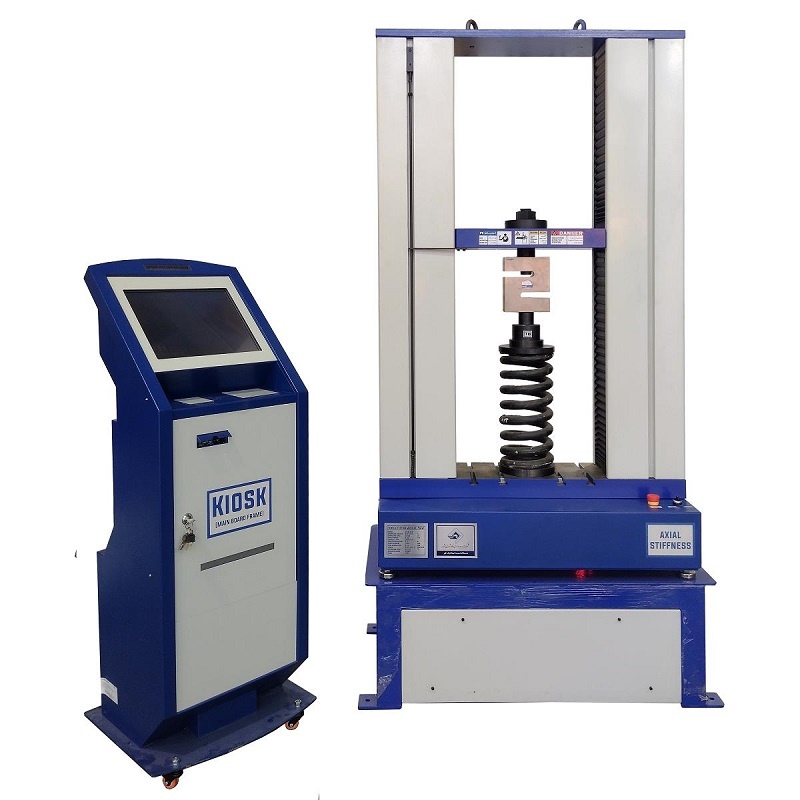
This device can also be used for final product tests such as polymer and rubber parts used in vehicles, assembly and disassembly tests, load testing of products like packaging containers and cartons
| Force Application Capacity (Kilonewton) | 150 |
| Distance Between Columns (Millimeters) | 550 |
| Device Usable Width (Millimeters) | 450 |
| Usable Stroke Between Jaws with Load Cell and Wedge Jaw Installed (Millimeters) | 850 |
| Total Stroke Between Jaws (Millimeters) | 1400 |
| Crosshead Movement Speed (Millimeters/Minute) | 0.1 to 214 |
| Displacement Resolution (Micrometers) | 10 |
| Displacement Measurement Error (Percentage) | 0.01 |
| Force Measurement Error | according to load cell class (default C3) |
| Operating Temperature Range (Celsius) | 10+ to 50+ |
| Number of Samples Displayable per Chart | 10 |
| Capability to Install Long-Stroke Extensometer | available |
| Dimensions (WxDxH) Centimeters | 900x620x1830 |
| Approximate Weight (Kilograms) | 780 |
| Power Consumption | 220±10V, 50~60Hz, 3.4A |
The dual-column tensile and compression testing machine model AZS-TNS150 can apply a force of up to 15 tons or 150 kilonewtons. This device is suitable for tensile testing of various plastic and rubber materials, pipes and fittings, and dumbbell-shaped specimens requiring speed and precision in measurements.
Additionally, this device can be used for testing finished products such as polymer and rubber components used in automotive applications, assembly and disassembly tests, and load tests on products like packaging containers, cartons, four-liter and twenty-liter containers, and oil and grease containers. Other applications include tests for polymer pipes and fittings (such as tensile tests, fitting pull-out tests, ring stiffness tests, ring flexibility tests, etc.).
In general, this device can perform various tensile and compression tests within a force range of up to 15 tons or 150 kilonewtons.
The device can stretch various materials up to 645 mm (including the load cell and standard grips). The total travel distance of the device without using the load cell and grips is up to 1445 mm.
The grip movement speed is controllable in the range of 0.1 to 400 mm/min, and thanks to the servo-electric mechanism (ball screw and servo motor), the speed remains constant across the entire range of motion and all forces.
The device’s software can perform tests on up to 10 specimens during each test cycle.
With this device, you can use various standard grips and fixtures or request custom grips and fixtures through the "Contact Us" page.